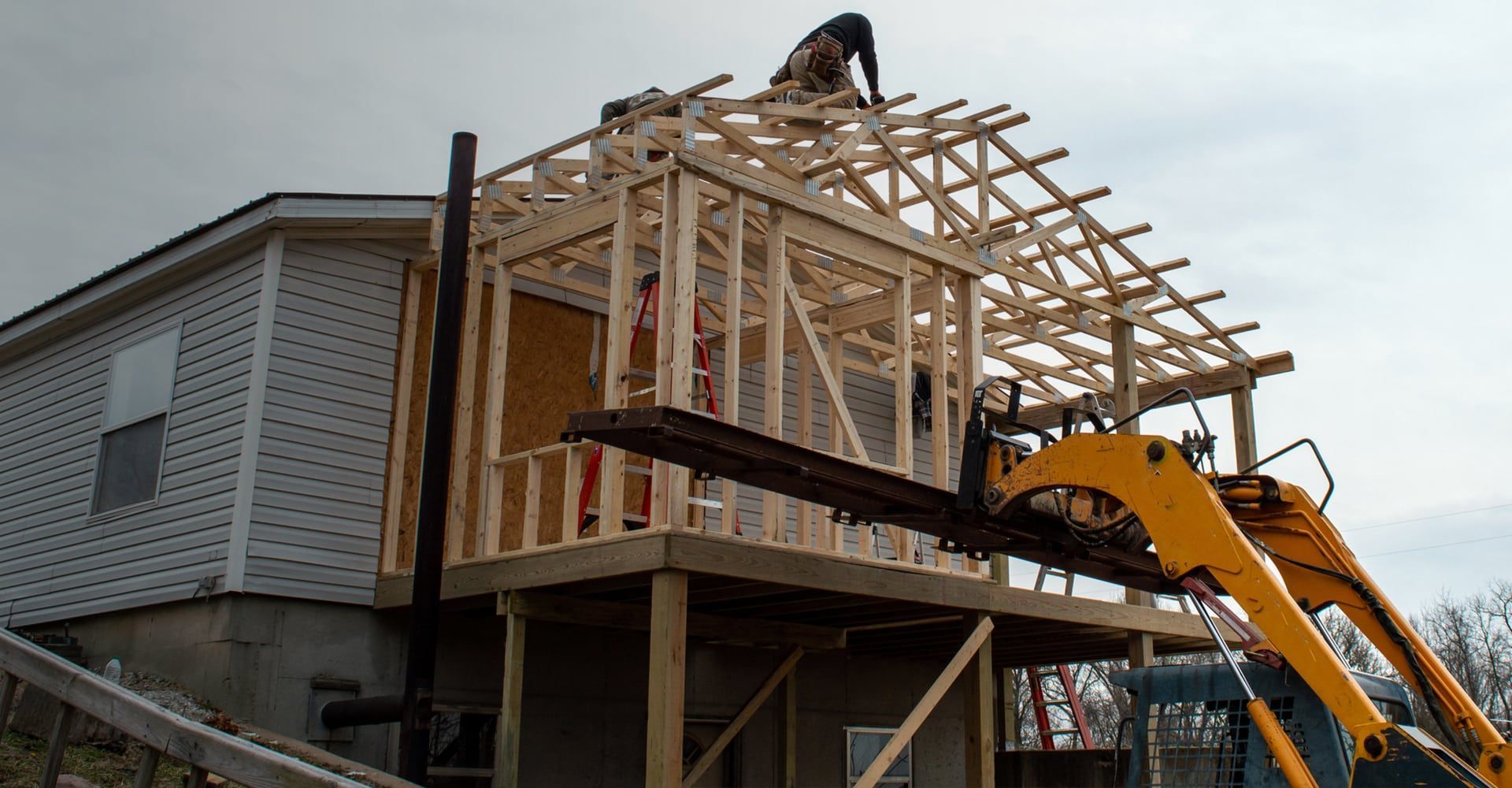Top Tips for Successfully Remodeling a Kitchen
Remodeling a kitchen involves many decisions, but with a solid plan, you can achieve your dream kitchen. This article provides step-by-step advice on budgeting, layout, materials, and more. By following these tips, you’ll ensure a smooth and successful remodel.
Key Takeaways
- Meticulous planning and a clear purpose are essential for a successful kitchen remodel, helping guide both design choices and functionality.
- Establishing a realistic budget (5-15% of home value) and accounting for a 20% contingency can prevent financial surprises during the renovation process.
- Prioritizing the selection of appliances before cabinetry, planning a functional layout, and choosing durable materials and lighting can significantly enhance the kitchen’s practicality and aesthetic appeal.
Introduction
The adage goes, “Failing to plan is planning to fail,” and nowhere is this more poignant than in remodeling your kitchen. The excitement of selecting shiny new appliances and envisioning the perfect backsplash can be intoxicating, but the true spirit of a successful transformation lies in meticulous preparation and consulting with remodeling professionals.
Diving into a major kitchen remodel is akin to preparing a gourmet meal; each ingredient must be measured, and each step timed to perfection. With every aspect, from the timeline to the budget, functionality to design, carefully considered, you’ll ensure your kitchen is not just a space but a sanctuary for both the cook and the guest.
Start with Your Why
Ever watched a chef in their element? There’s a sense of purpose in every chop, a reason behind each ingredient choice. Your kitchen remodel should stir up that same sense of intention. Are you seeking to create a gathering hub for family and friends, or an efficient, chef-worthy workspace? Your ‘why’ will be the cornerstone upon which your new kitchen’s design and functionality are built.
When the dust settles and the last tile is laid, what do you envision? Picture your ideal morning brewing coffee or evenings spent teaching your little ones the art of pasta making. Let these vignettes of daily life paint the canvas of your planning process, infusing each decision with personal significance.
Budgeting for Your Kitchen Remodel
Talking numbers might not be as thrilling as choosing the perfect pendant light, but setting a realistic budget is perhaps the most critical step in a kitchen remodel. It’s about balancing your champagne tastes with your beer budget, ensuring your new kitchen doesn’t break the bank.
Keep in mind that the sweet spot for your kitchen renovation budget typically ranges between 5% to 15% of your home’s value, aligning your investment with the potential return it can offer. Also, consider setting aside a contingency fund; about 20% of your total project costs should suffice for those unexpected twists that renovations love to throw your way.
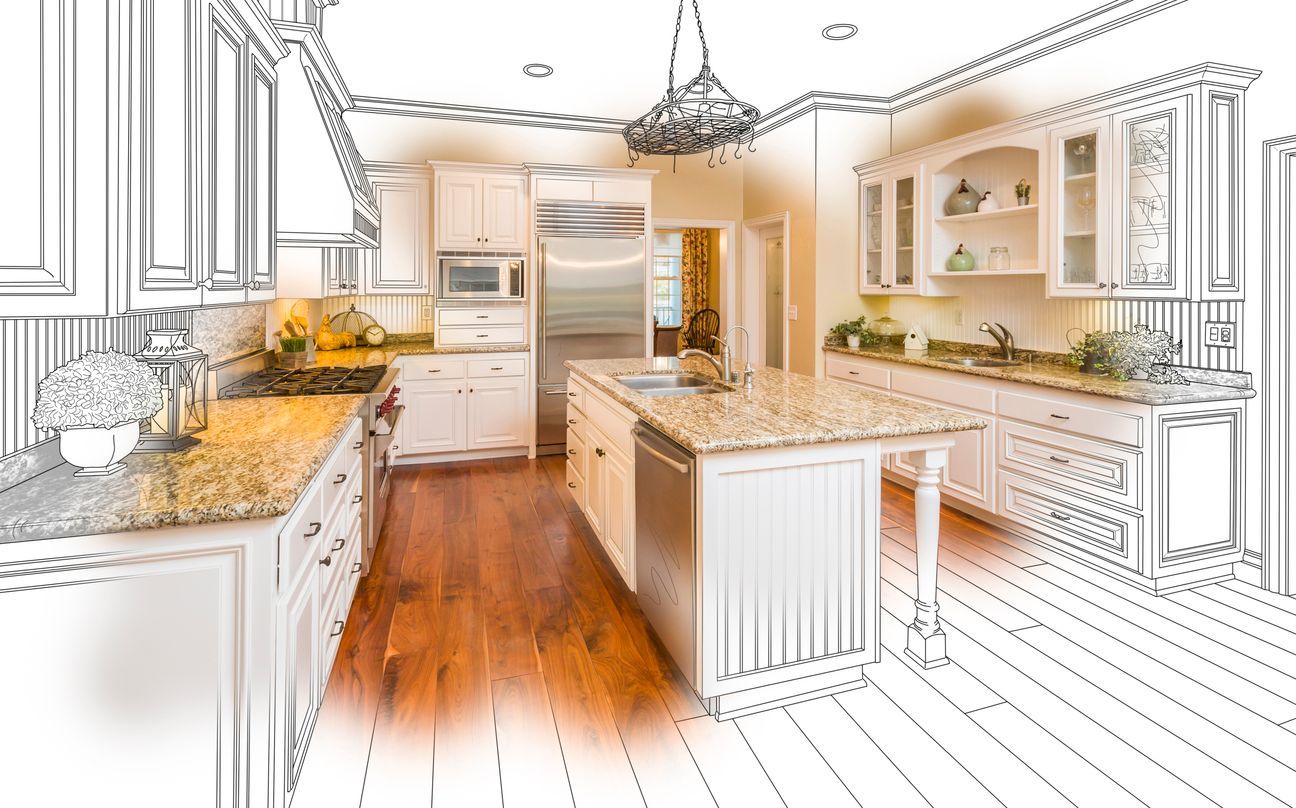
Planning Your Layout
The layout of your kitchen is the skeleton around which the meat of your design will be added. It’s more than just where your island sits or how your cabinets open; it’s about creating a harmonious flow that makes cooking, cleaning, and socializing effortless. Establishing a focal point in your kitchen design can help achieve this balance.
Whether you’re a culinary maestro or a microwave maestro, your kitchen layout should cater to your lifestyle. Ponder the paths you take as you dance around the kitchen, from fridge to stove to sink, and let that ballet dictate your design. Keep in mind, though, that the devil is in the details like appliance clearances and walkway widths, which are crucial for maintaining functionality.
Choosing the Right Materials
When it comes time to select materials, think of your kitchen countertops as the attire your kitchen will don for years to come. You want these elements to be not only fetching but also made to last. Quartz, for instance, has risen to the top of many homeowners’ lists for its stain, scratch, and chip resistance, not to mention its no-fuss maintenance.
And let’s not forget the cabinets. Imagine opening a drawer and feeling the sturdy embrace of solid wood. Hardwoods like oak and walnut not only stand the test of time but also carry an air of distinction that can elevate your entire kitchen.
Selecting Appliances First
Ever tried to fit a square peg in a round hole? That’s what selecting appliances after cabinetry feels like. To avoid such a conundrum, begin your journey by choosing your appliances first. These workhorses of the kitchen dictate much of its structure and functionality, so their selection should be early and thoughtful.
Knowing the precise measurements of your appliances can inform the dimensions of your cabinets and even the layout of your kitchen, ensuring a seamless integration of form and function. It’s a decision that’s not just about aesthetics but also about the practicality of your cooking space.
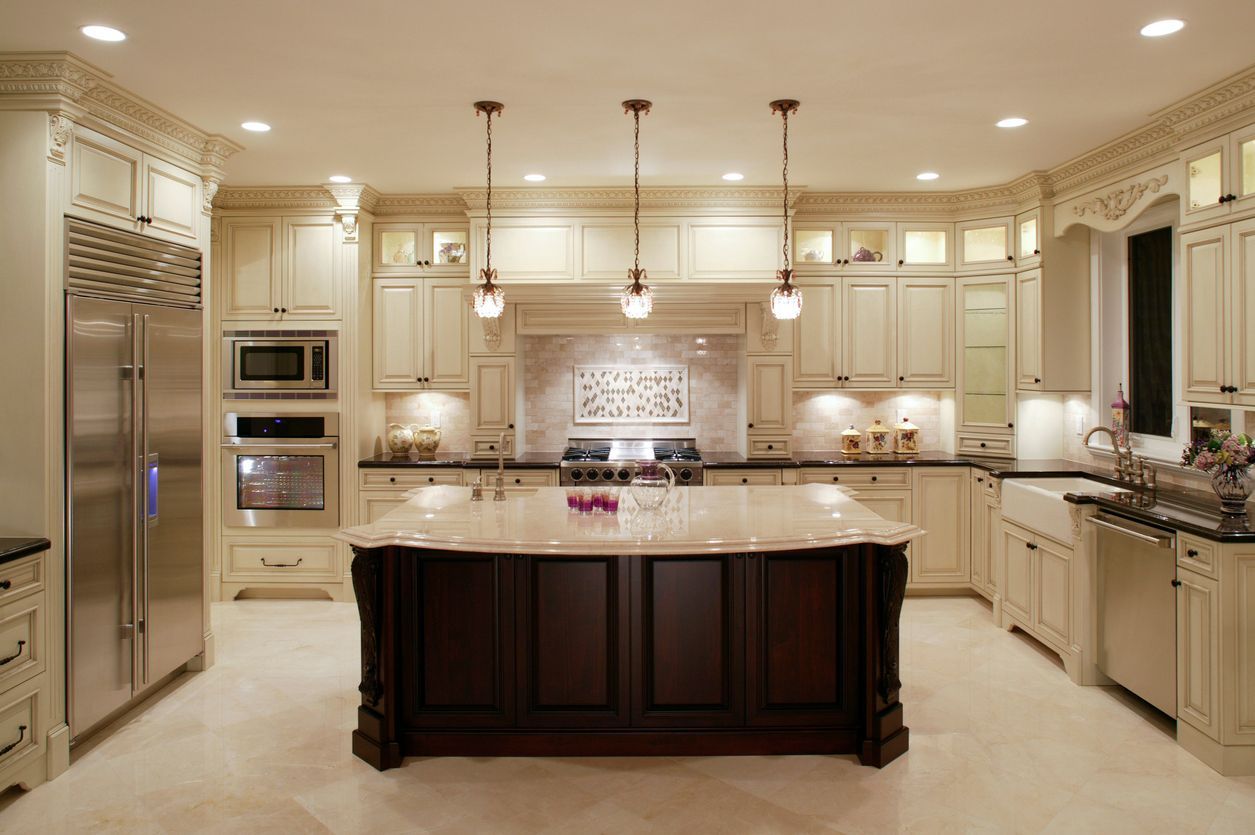
Lighting Matters
Lighting in a kitchen isn’t just about seeing what you’re chopping; it’s about setting the mood. A well-lit kitchen can transform the mundane act of meal prep into a theatrical performance. From task lighting that spotlights your cutting board to pendant lights that cast a warm glow over your island, each fixture plays a role in the kitchen’s ambiance.
Consider LED lights for their:
- Energy efficiency
- Longevity
- Functionality
- Sleek, unobtrusive look
LED lights are the marathon runners of the lighting world, outlasting and outshining their fluorescent and xenon counterparts. Modern lighting fixtures like under-cabinet LEDs offer both functionality and a sleek, unobtrusive look.
Flooring Options
The floor of your kitchen is the unsung hero, often overlooked yet always underfoot. When choosing flooring, you’re laying the foundation of your kitchen’s character and practicality. Materials range from the rustic charm of brick to the sleek sophistication of marble, each with its own merits and maintenance needs.
Perhaps you’re drawn to the warmth of hardwood or the cool resilience of porcelain tiles. Whichever you choose, remember that your kitchen’s floor is not just a stage for your culinary performances but also a surface that will endure spills, drops, and the patter of feet for years to come.
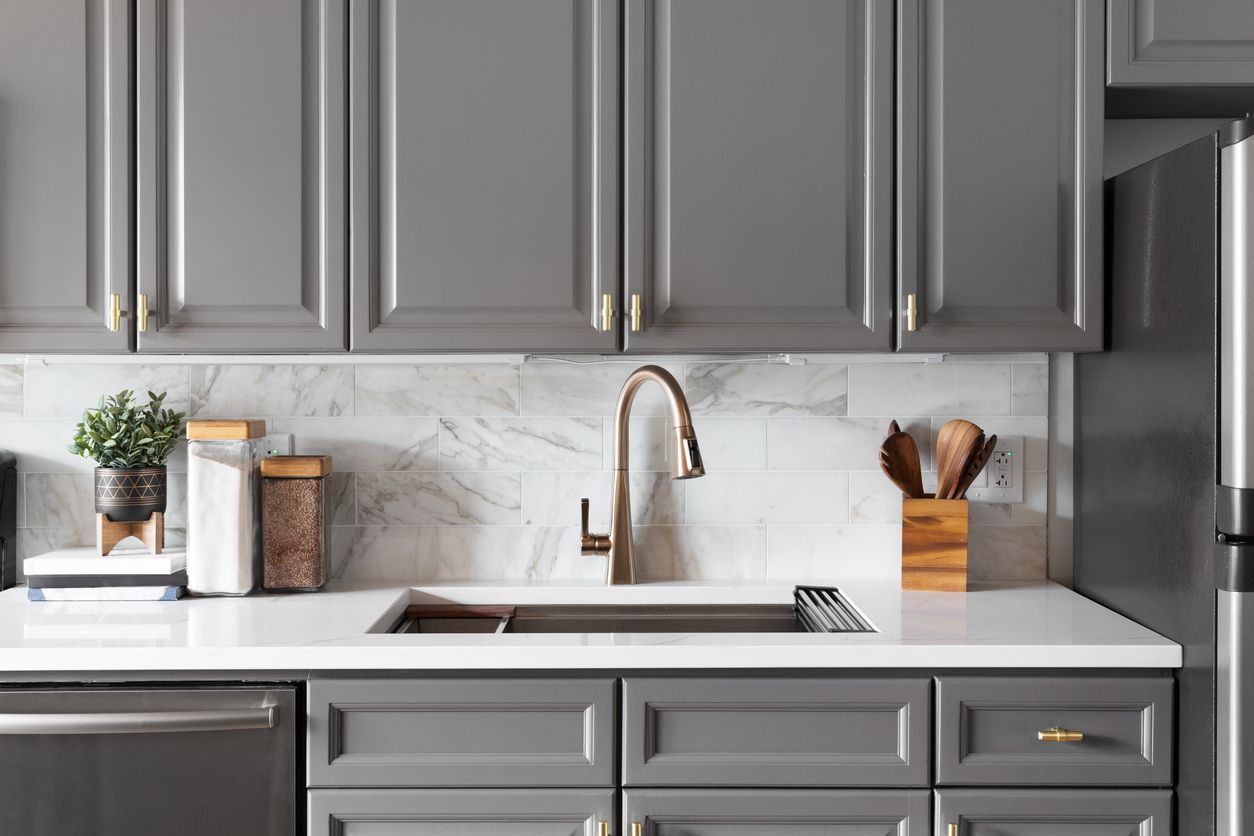
Cabinet Installation Tips
Cabinets, especially custom cabinets, are the backbone of your kitchen’s storage and style. Installing them properly is akin to setting the bones of your kitchen’s body — it must be done with precision and care. Start with the upper cabinets to keep your base clear and your sanity intact. Don’t forget to choose the right cabinet hardware to complement your kitchen’s design.
And when it comes to the nuts and bolts of the job, don’t skimp on quality. Using sturdy screws like GRK’s R4 self-countersinking screws can mean the difference between cabinets that stand the test of time and those that sag with the weight of a few too many dinner plates.
Painting vs. Replacing Cabinets
To paint or not to paint, that is often the question when it comes to cabinets. A fresh coat of paint can breathe new life into your kitchen at a fraction of the cost of replacement. However, if your cabinets have seen better days — perhaps they’re showing signs of water damage or warping — then replacing them might be the only way to go.
Refacing is another option, striking a happy medium between painting and full replacement by updating only the cabinet doors and drawer fronts with a new door style. It’s a quick fix that doesn’t disturb the existing layout, plumbing, or electrical configurations — a sweet compromise for those looking to refresh rather than revamp.
Adding a Kitchen Island
A kitchen island can be a veritable Swiss Army knife, serving multiple purposes such as:
- Prep area
- Storage space
- Dining area
- Homework station
But before you dive into adding one, make sure there’s enough room to maneuver in the existing space. A good rule of thumb is to have at least 42 inches of clearance on all sides.
If you’re tight on space, fear not. A well-designed island can still offer valuable workspace and clever storage solutions without feeling like an obstacle in the heart of your kitchen. And for those who entertain, consider integrating seating into your island design — it’s sure to become the go-to spot for guests and family alike.
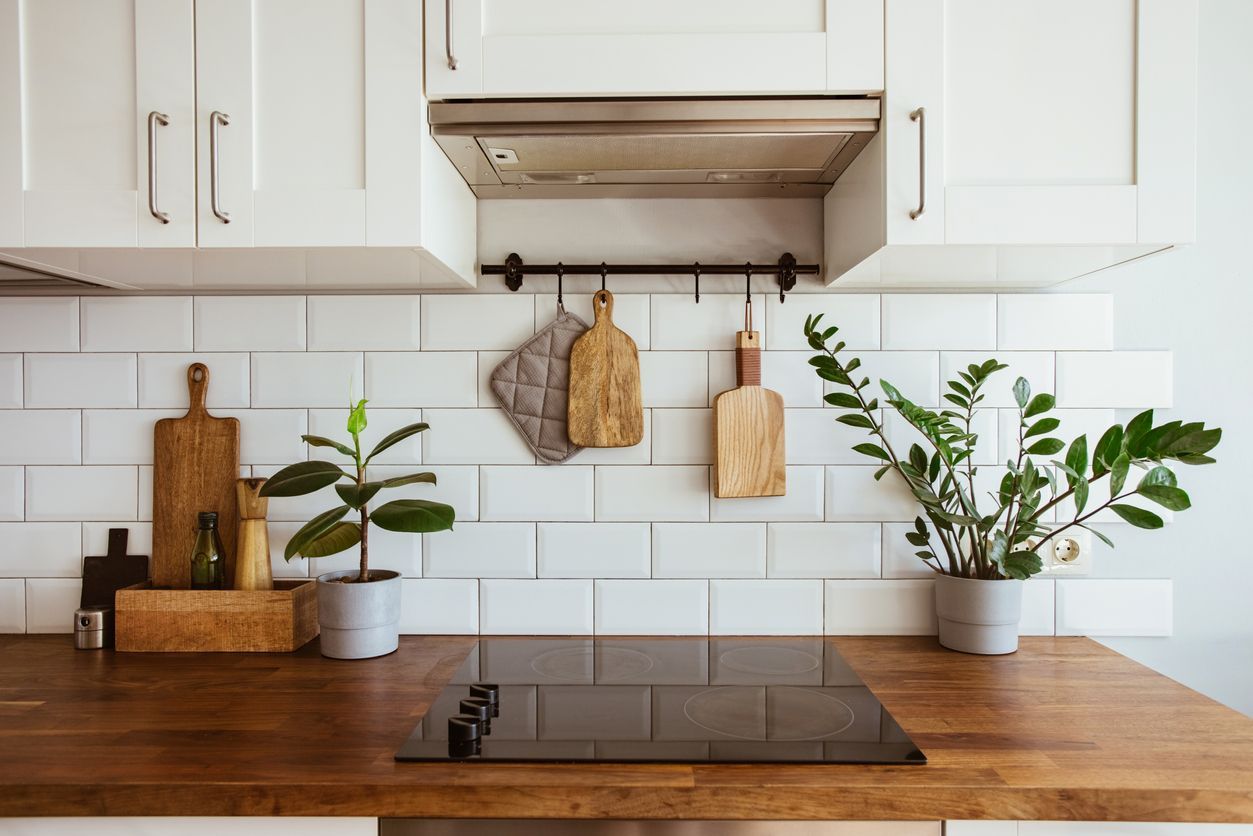
Backsplash Ideas
A backsplash isn’t just a practical necessity — it’s a canvas for your creativity. From the classic simplicity of subway tiles to the modern flair of hexagon patterns, your choice of backsplash can reflect your personality and tie together the elements of your kitchen.
For those seeking to make a statement, consider materials like marble for a touch of elegance or mirrored tiles to create the illusion of more space. And if you’re on a budget, peel-and-stick tiles can offer an attractive and easy-to-install solution that won’t break the bank.
Plumbing and Electrical Work
When it comes to kitchens, what lies beneath the surface is just as important as the visible finishes. Plumbing and electrical work are the veins and arteries of your kitchen, so getting them right is crucial. It’s best to tackle these tasks before the walls go up — it’s far easier than having to make changes after the fact.
Plan for plenty of outlets and consider the placement of fixtures like a pot filler — a tap over the stove that can make filling pots with water a breeze. Such details may seem small, but they’re the kinds of things that can elevate a kitchen from good to great.
Maximizing Storage
No matter the size of your kitchen, addressing your storage needs is king. It’s the secret to a clean countertop and a calm cooking environment. Think beyond the traditional cabinets and drawers; imagine a pull-out pantry that tucks away your groceries or a custom spice rack that keeps your seasonings at hand.
Incorporate clever solutions like appliance garages to hide your countertop devices or rolling cabinets that offer extra prep space. By maximizing your storage, you’re not just organizing your kitchen; you’re simplifying your life.
Considering Resale Value
While your kitchen remodel should certainly reflect your personal style, it’s wise to keep an eye on the future. Choose timeless materials and neutral colors to ensure your kitchen appeals to a broad spectrum of tastes. This way, you’re not just investing in your current happiness but also in the potential resale value of your home.
Insulation and Wall Preparation
Before the cabinets go up and the appliances roll in, take a moment to ensure your kitchen walls are well-insulated and sealed. This not only contributes to the energy efficiency of your home but also prevents moisture issues that could spell disaster for your new kitchen.
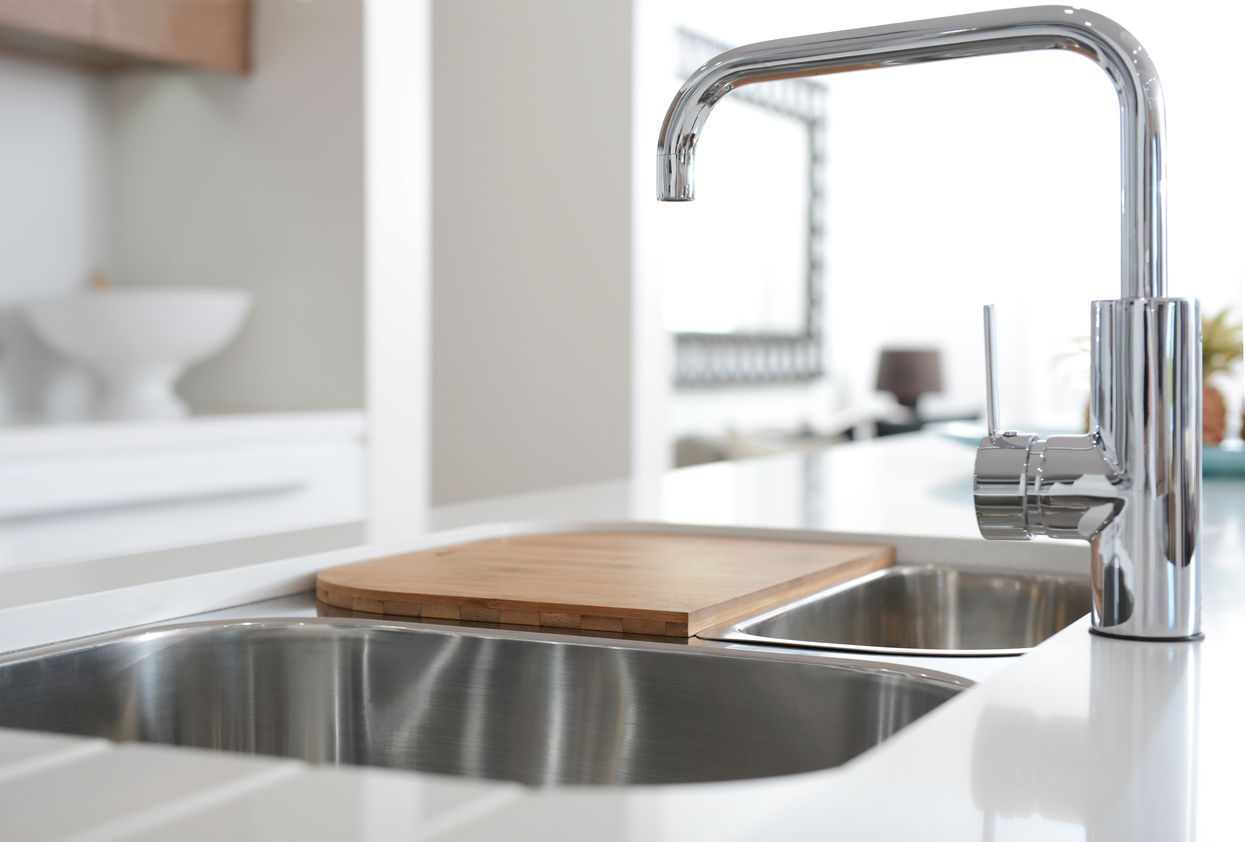
Final Touches
And finally, as you near the end of your kitchen remodel journey, it’s time for the final touches. These are the details that can make all the difference — the hardware finishes, the paint color, the style of your faucet. It’s the last dash of salt, the final drizzle of olive oil that turns a dish from good to great.
Summary
To wrap it up, a kitchen remodel is a symphony of planning, design, and execution. From the foundational decisions of layout and appliances to the personal touches of backsplashes and hardware, each element plays a crucial role in creating a space that’s both functional and inviting. Remember, the key to a successful kitchen remodel lies in understanding the process, making informed choices, and enjoying the journey from start to finish.
Frequently Asked Questions
How much should I budget for a kitchen remodel?
You should budget between 5% to 15% of your home's value for a kitchen remodel, and allocate a 20% contingency for unexpected costs. This will help you maximize return on investment.
Should I choose kitchen appliances or cabinets first?
Choose your appliances first to ensure that your cabinets and layout can accommodate them properly without any last-minute adjustments. This approach will help to streamline your kitchen design process.
What are the best materials for kitchen countertops and cabinets?
Consider quartz for kitchen countertops due to its durability and low maintenance, while opting for hardwoods like oak and maple for cabinets for their longevity and stylish appeal.
Is it better to paint or replace my kitchen cabinets?
If your kitchen cabinets are structurally sound and you want a cost-effective option, painting is a good choice. However, if they're damaged or you're making significant layout changes, replacing them would be a better option.
How do I ensure my kitchen remodel adds to the resale value of my home?
To ensure your kitchen remodel adds to the resale value of your home, focus on neutral designs and quality materials that appeal to a wide range of buyers, ensuring long-term style and functionality.


